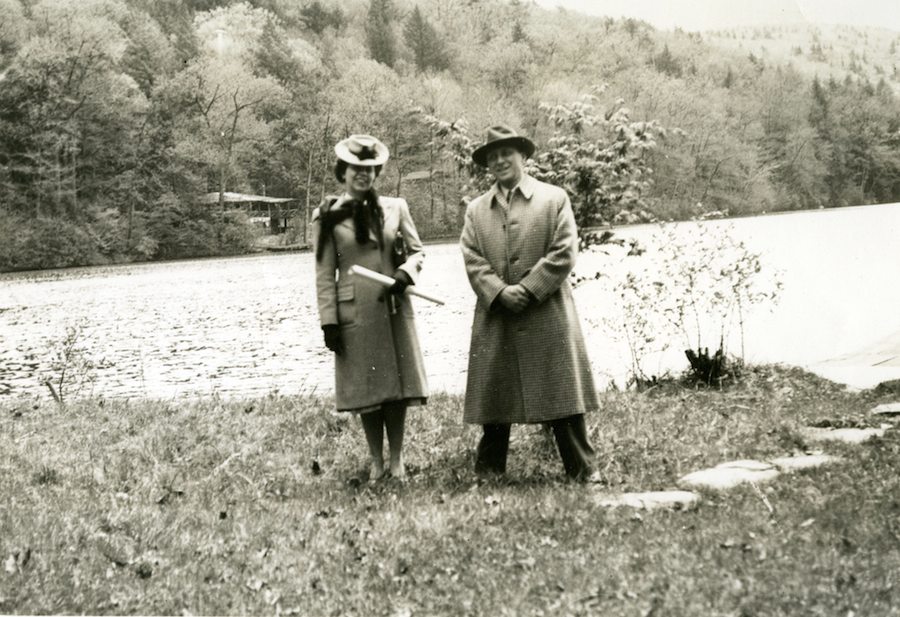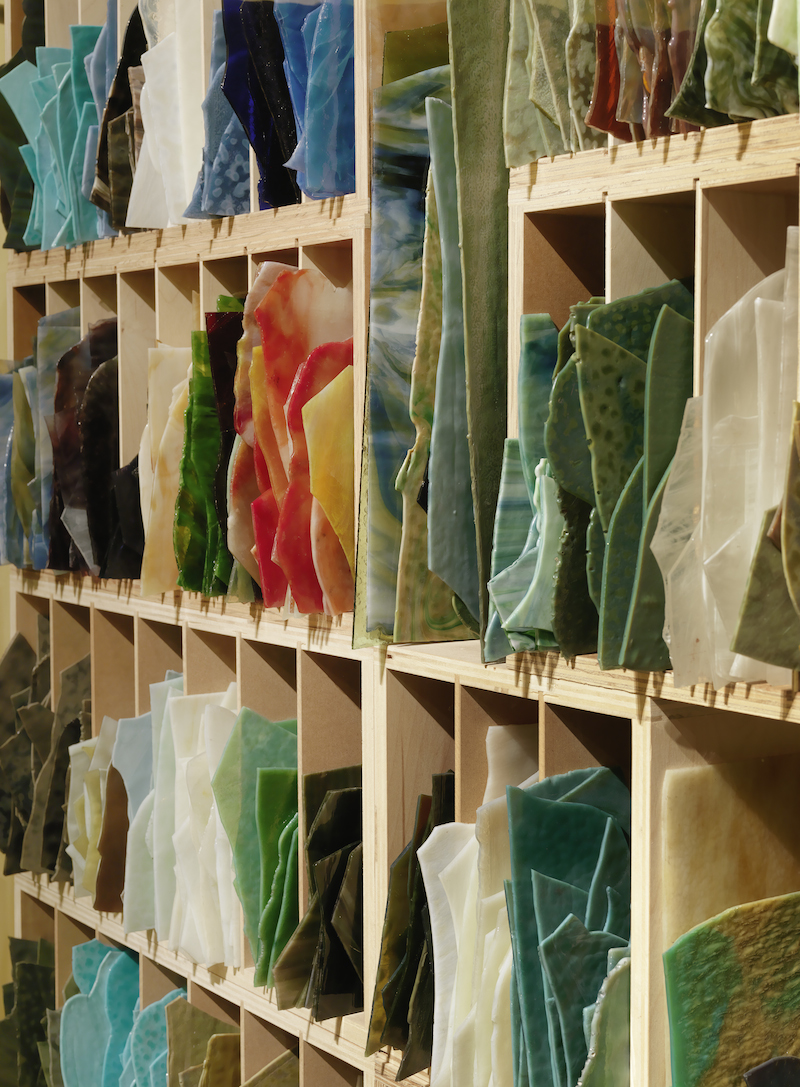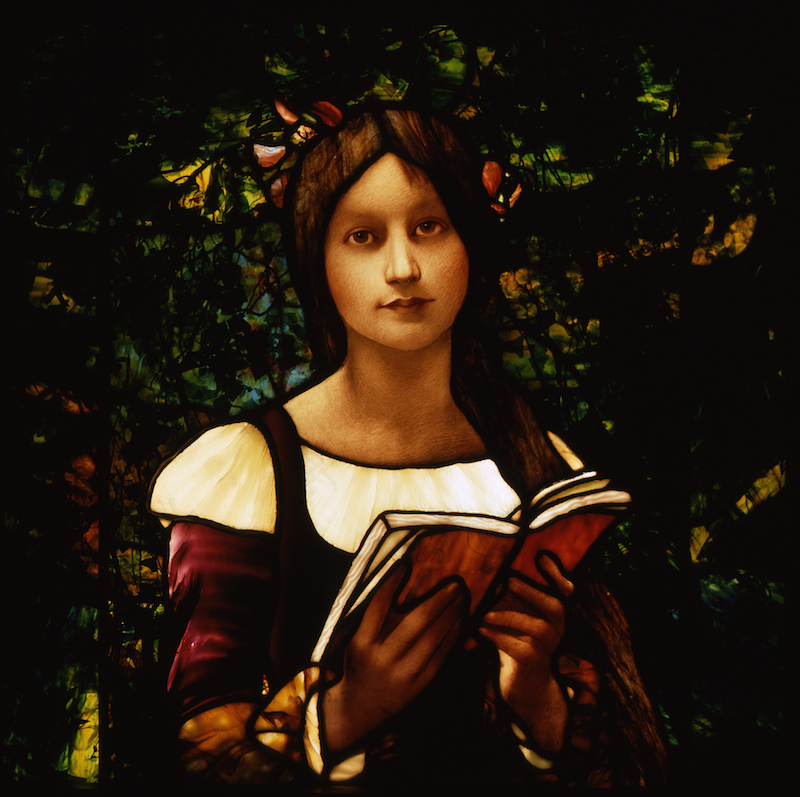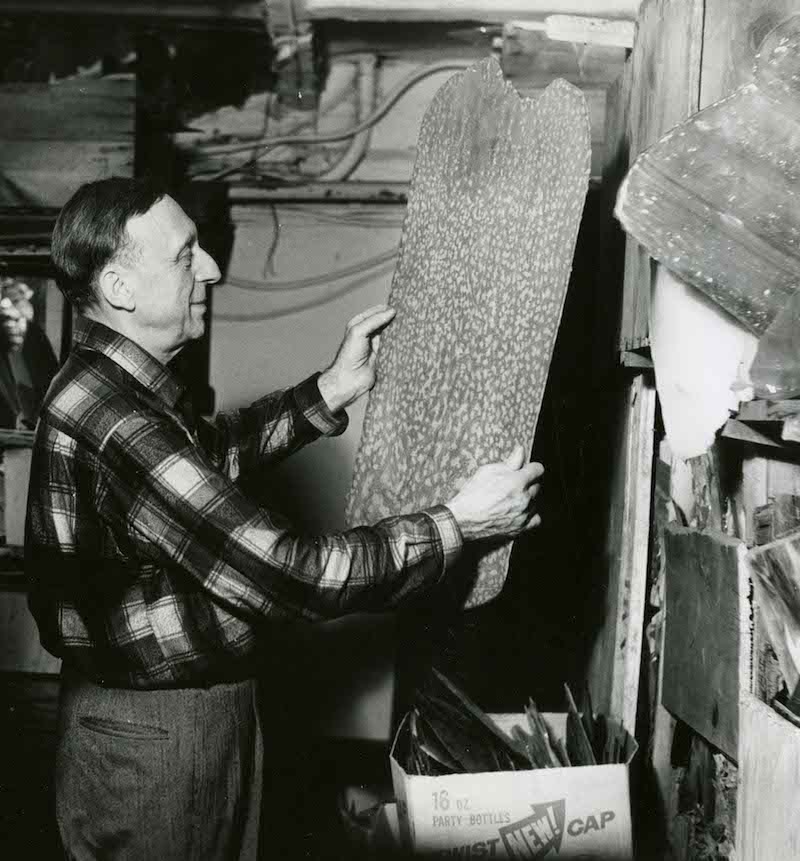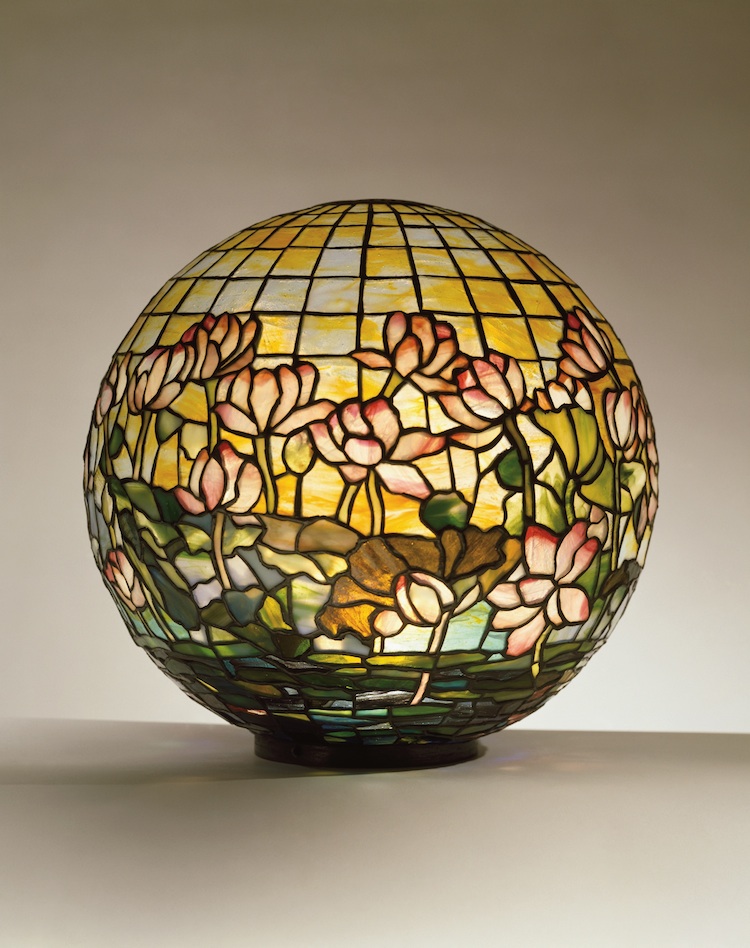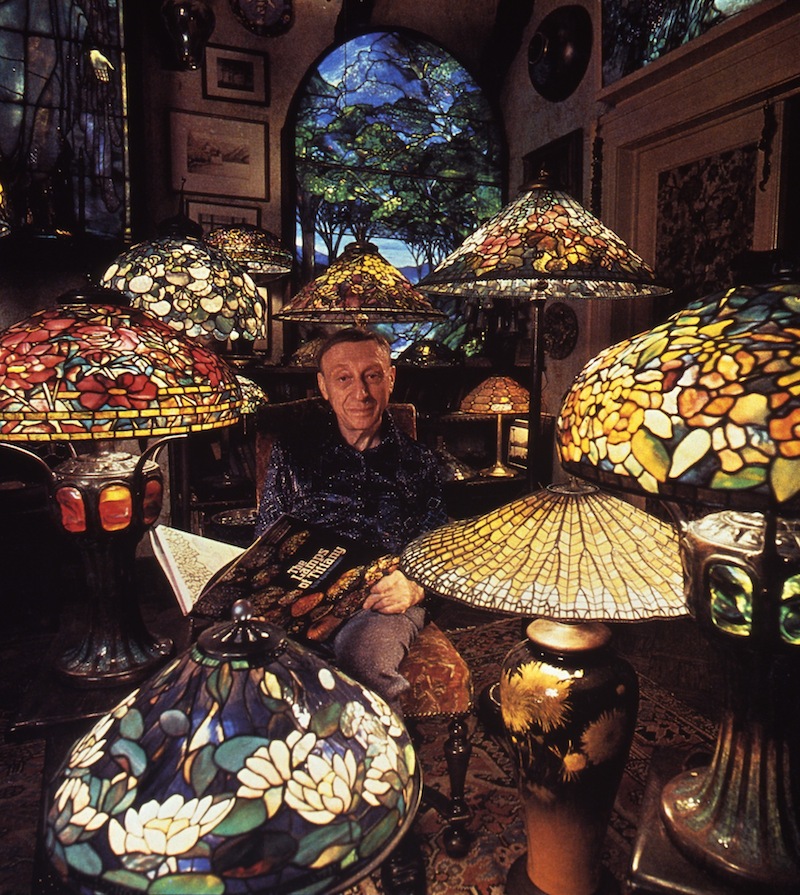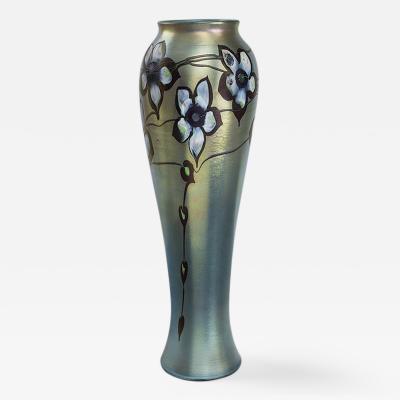Rekindling a Passion for Tiffany
The splendor of the Gilded Age was a faded memory when the newlyweds began combing second-hand shops in Greenwich Village to furnish their Queens home. The budget-minded couple was Dr. Egon Neustadt and his wife Hildegard, both Austrian immigrants.
Enamored of all things American, they stumbled upon a colorful stained-glass lamp with a daffodil design and were excited to learn that it was made in their adopted homeland. It was a Tiffany lamp. From that one find grew a 50 year fascination with collecting works by American artist Louis C. Tiffany.

- Tiffany Studios, New York, Daffodil Library Lamp, ca. 1905. Leaded glass, bronze. The Neustadt Collection of Tiffany Glass ©NCTG. Dr. Neustadt describes the first Tiffany lamp he ever purchased as a small Daffodil that gave the impression of “real flowers growing in a real garden.” This lovely sixteen-inch Daffodil shade, the only one of its kind in the collection, may have been the beginning of the Neustadts’ passion for Tiffany lamps.
Egon said of his first purchase: “We had no idea it was a Tiffany or who Tiffany was, but we bought it for $12.50 and took it home and I put it on my desk. Our friends didn’t like it.” By the mid-1930s, Tiffany’s designs were out of fashion and at odds with popular tastes, making them affordable to acquire.
It wasn’t always so. Louis C. Tiffany (1848-1933) was one of the leading tastemakers of the Gilded Age. The son of the founder of Tiffany & Company, the luxury retailer renowned for its exquisite jewelry and silver, Louis Tiffany was exposed to the firm’s highly organized workshops and showrooms filled with the finest decorative objects from around the world. This undoubtedly stimulated his appreciation for fine craftsmanship and innovative design, which became the hallmark of his celebrated Tiffany Studios.
Although Tiffany initially devoted his creative energies to painting landscapes and exotic scenes from his travel abroad, his interests quickly expanded into interior design and the decorative arts. He formed artistic firms in Manhattan and Queens where, under his direction, hundreds of artists and artisans created extraordinary leaded-glass windows, lamps, mosaics, glassware, enamels, ceramics, metalwork, jewelry, furniture, and textiles. Many of his clients were wealthy, socially-prominent families seeking unique decorative schemes and objects for their lavish homes.
With the stock market crash in 1929, Americans’ tastes changed and Tiffany glass lost its luster for many consumers. However, the Neustadts’ interest in Tiffany’s work continued to evolve. As Egon’s professional career as an orthodontist and real estate developer flourished, he and Hildegard acquired additional Tiffany lamps in all shapes, sizes and patterns. In time, their collection grew to including more than 200 lamps.
The Neustadts also acquired leaded-glass windows and bronze desk sets. Additionally, in 1967, Egon had the foresight to purchase the vast inventory of opalescent sheet glass and glass “jewels” that remained on hand at the Tiffany Studios when they closed in the late 1930s—a treasure trove of more than a quarter of a million examples of precious original materials. A few years later, Egon published The Lamps of Tiffany, a lavishly illustrated and indispensable guide documenting his unparalleled collection. He methodically classified his lamps according to shape and developed a naming system to describe the various types of flat glass used at the Tiffany Studios.
Dr. Neustadt established a non-profit museum in 1969, which today is The Neustadt Collection of Tiffany Glass and based in Queens, New York. Dedicated to preservation, scholarship, education, and connoisseurship, the organization provides an in-depth look at the artistry of the Tiffany Studios and its contribution to a uniquely American chapter in the history of stained glass. Today, The Neustadt shares this story and its collections through its gallery at the Queens Museum in New York City and exhibitions that travel to museums nationwide.
In fact, The Neustadt's current traveling exhibition, Tiffany Glass: Painting with Color and Light, will be on display at the Leigh Yawkey Woodson Art Museum beginning December 3, and in spring 2017, it will travel to the Cincinnati Art Museum. Featuring some of the most iconic and celebrated of Tiffany’s works, the exhibit includes five windows, 20 lamps, and 100 pieces of opalescent flat glass and glass “jewels” that illustrate the rich expanse of color and light available to the artists at the Tiffany Studio. As a painter, Tiffany was captivated by the interplay of light and color, and this fascination found its most spectacular expression in his glass “paintings.” Using new and innovative techniques and materials, Tiffany’s studios created leaded-glass windows and lampshades in vibrant colors and richly varied patterns, textures, and opacities.
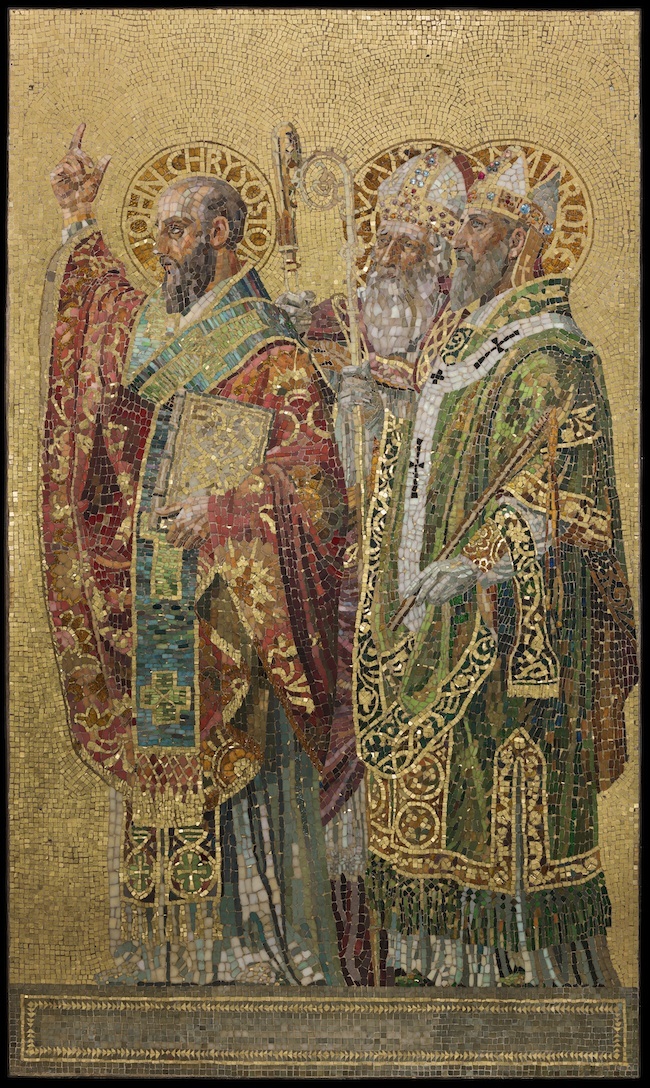
- Tiffany Glass and Decorating Company, New York. Designed by Joseph Lauber (American, b. Germany, 1855–1948), Fathers of the Church, 1892. Glass mosaic with glass jewels. Exhibited at the 1893 World’s Columbian Exposition in Chicago. The Neustadt Collection of Tiffany Glass. Photo: The Corning Museum of Glass.
Tiffany’s pioneering materials and techniques extend beyond windows and lamps and also include glass mosaics. This extraordinary but little-known aspect of his artistic production will be presented at The Corning Museum of Glass starting May 2017. Tiffany’s Glass Mosaics, organized jointly by The Corning Museum and The Neustadt Collection of Tiffany Glass, will combine works from both collections with important loans and specially designed digital displays to reveal how Tiffany’s mosaics reflect his studio’s artistry and innovation in glass.
The Neustadts’ passion for Tiffany helped to rekindle interest in his artwork. As its popularity grew, prices began to surge. During late 1960s or early 1970s, Egon balked at a $4,000 price tag for a Tiffany Wisteria lamp. He called the sum "fantastic" since Wisteria lamps were typically selling for around $2,000. But after several weeks of pining and unsuccessful negotiating, he eventually caved and paid the asking price. Today, that $4,000 would be a steal: in the last few years, Wisteria lamps have sold at auction for between $350,000 and $1.5 million. A far cry from the $12.50 he paid for his first lamp.















